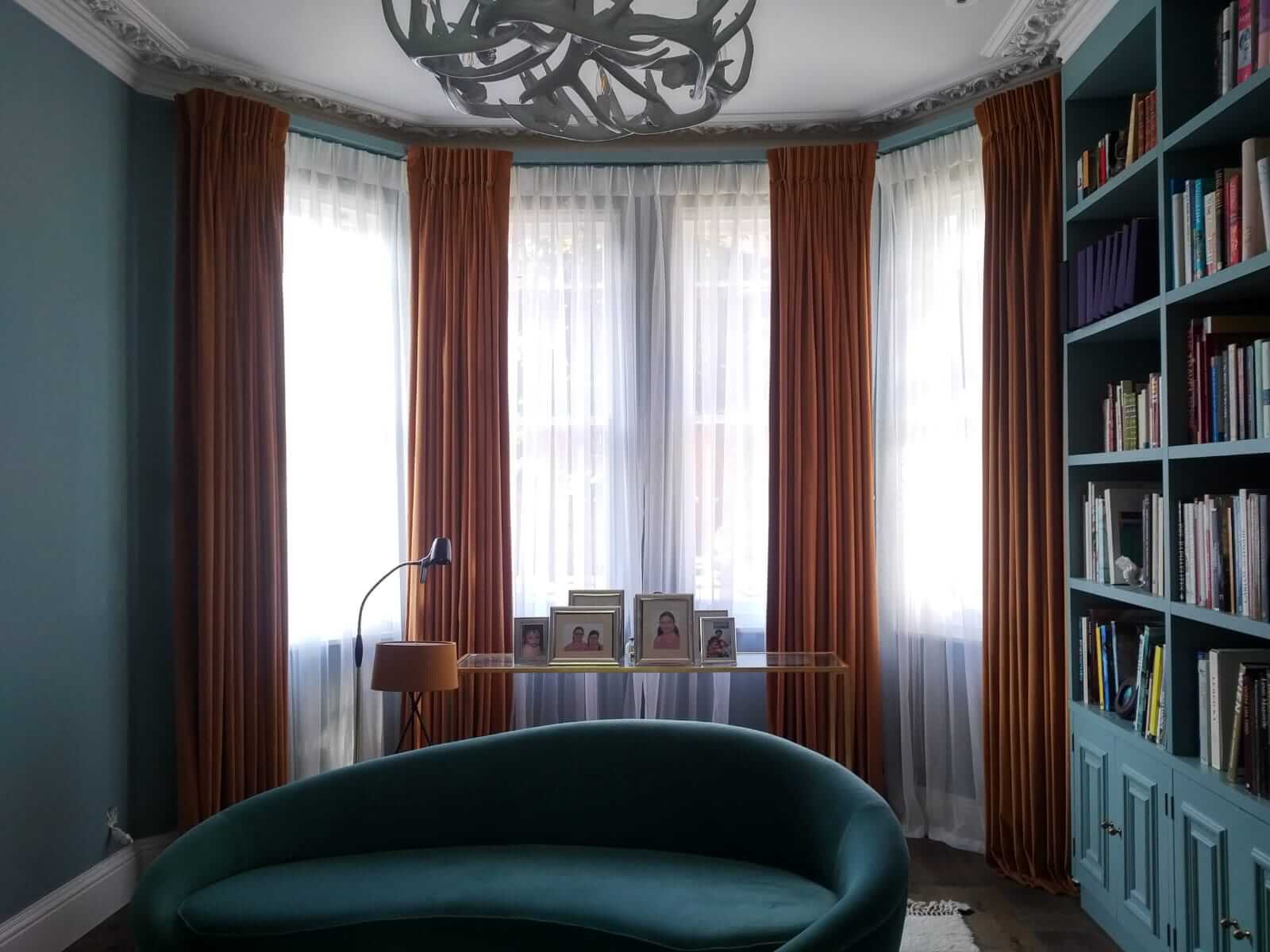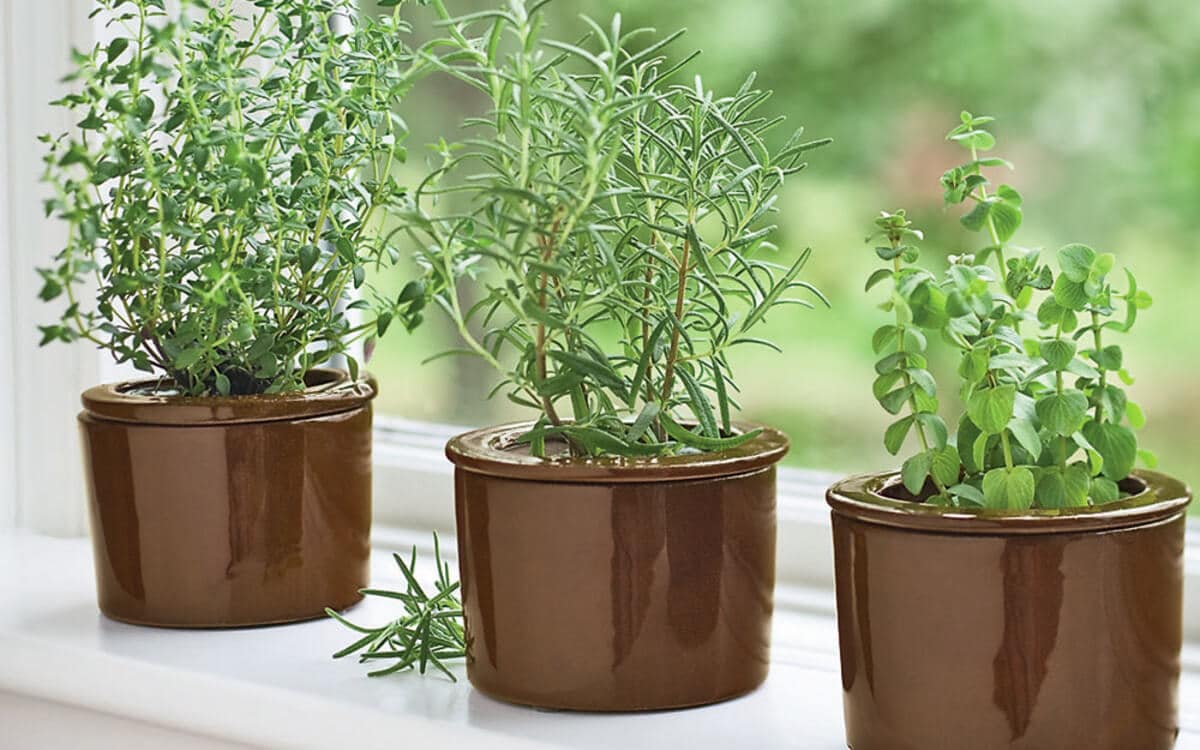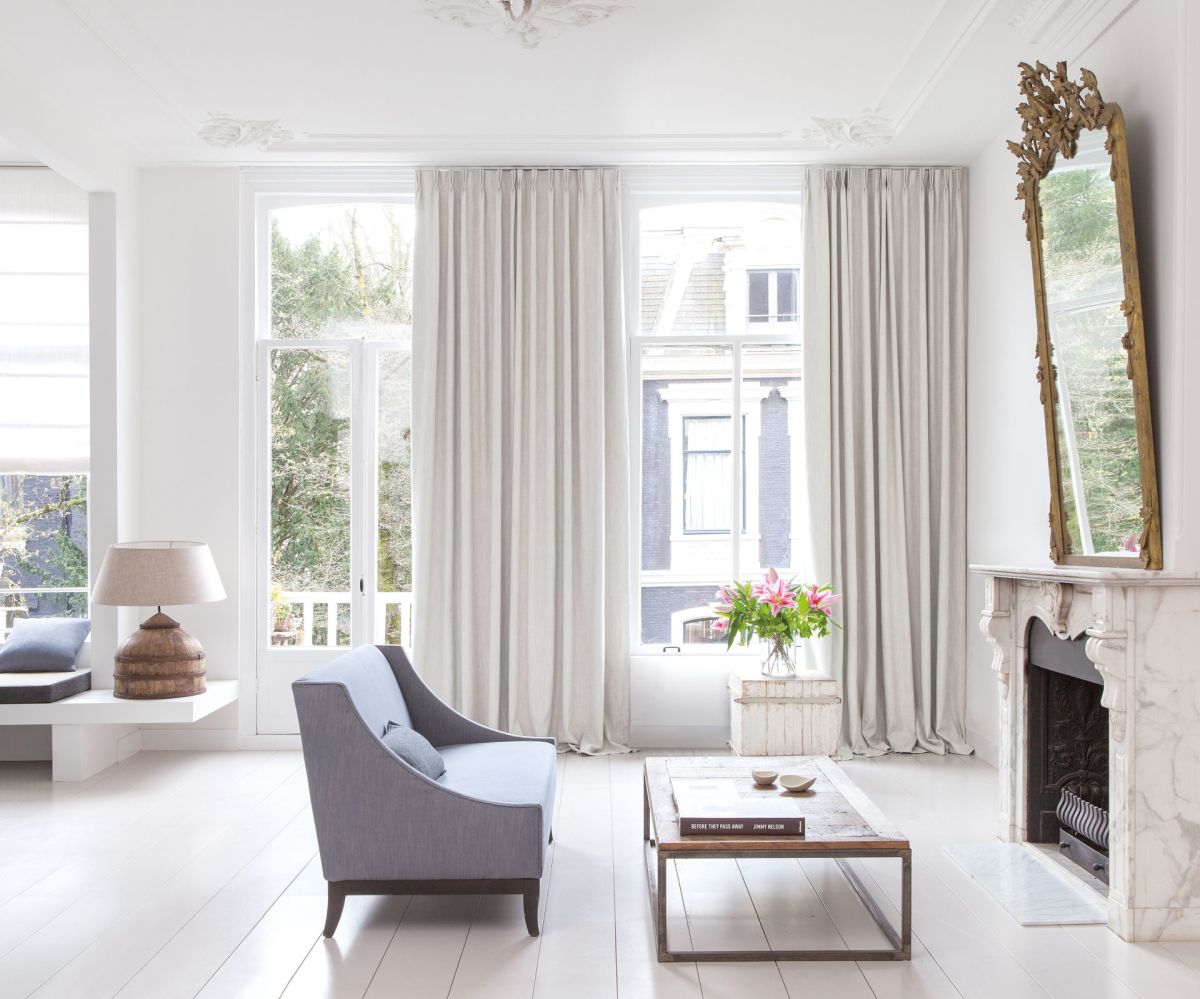

Articles
How Many Curtains Per Window
Modified: October 20, 2024
Discover how to determine the ideal number of curtains for each window in our informative articles, providing valuable insights for your home decor.
(Many of the links in this article redirect to a specific reviewed product. Your purchase of these products through affiliate links helps to generate commission for Storables.com, at no extra cost. Learn more)
Introduction
When it comes to window treatments, curtains are a popular choice for many homeowners. They not only add a touch of elegance and style to a room, but they also provide privacy and control over the amount of light that enters the space. However, determining how many curtains to hang on a window can be a confusing task. Should you opt for a single curtain or multiple curtains? How do you know how many curtains are sufficient to cover the window adequately?
In this article, we will explore the factors to consider when deciding how many curtains to hang per window. From the size of the window to the desired fullness, we will delve into the various elements that can influence your decision. By the end of this article, you will have a better understanding of how to choose the right number of curtains for your windows.
Key Takeaways:
- Consider the size of your window and desired coverage when deciding on the number of curtains. Wide windows may require multiple panels for full coverage, while smaller windows may only need a single curtain for a touch of elegance and simplicity.
- The level of fullness you desire in your curtains can influence the number needed. More curtains or wider panels create a fuller, more opulent look, while fewer curtains or narrower panels provide a sleek, minimalist appearance.
Read more: How Many Candles Per Table On A Wedding
Factors to Consider
Before deciding on the number of curtains for your window, there are several factors that you should take into consideration. These factors will help you determine the most appropriate approach and ensure that you achieve the desired functionality and aesthetics. Let’s explore these factors in detail:
- Size of the Window: The size of the window is one of the primary factors to consider when deciding on the number of curtains. A large window may require multiple curtains to cover the entire area adequately, while a smaller window may only need a single curtain. Take accurate measurements of your window to determine the size requirements.
- Privacy and Light Control: Consider the level of privacy and amount of light control you desire. If you need complete privacy and want to block out most of the light, multiple curtains with blackout lining can be a suitable choice. On the other hand, if you want some natural light to filter through while still maintaining privacy, a sheer curtain with an additional layer can do the trick.
- Style and Aesthetics: The style and aesthetics of your space play an important role in determining the number of curtains. If you’re aiming for a classic and traditional look, using multiple curtains on either side of the window can create a grand and elegant effect. For a more modern and minimalist vibe, a single curtain can provide a clean and sleek appearance.
- Types of Curtains: Different types of curtains have varying levels of coverage. For example, a panel curtain typically covers a smaller portion of the window, while a full-length curtain provides maximum coverage. Consider the types of curtains that will suit your preferences and meet your functional needs.
By considering these factors, you can make an informed decision about the number of curtains to hang on your windows. Remember that there is no one-size-fits-all approach, and it ultimately depends on your personal preferences and the specific requirements of your space.
Size of the Window
The size of the window is a crucial factor when determining how many curtains to hang. The dimensions of your window will help you decide whether a single curtain or multiple curtains would be the most suitable choice.
If you have a large window, such as a floor-to-ceiling or bay window, it may require multiple curtains to cover the entire area effectively. Hanging two or more panels on each side of the window can create a more balanced and aesthetically pleasing look. The additional curtains will also provide better coverage, allowing you to have greater control over privacy and light filtration.
On the other hand, smaller windows may only require a single curtain. A single curtain can adequately cover the window while adding a touch of elegance and simplicity. This can be an ideal option for standard-sized windows in bedrooms, kitchens, or small living spaces.
When measuring the size of your window, consider both the width and height. For wide windows, you may need to select wider curtain panels or opt for multiple narrower panels to cover the entire width. For taller windows, ensure that the curtains are long enough to reach the desired length.
Keep in mind that proper measurements are crucial to achieving the desired look and functionality. The curtain panels should be wide enough to cover the window when closed and should have enough fabric to create an attractive and full appearance when open.
Take accurate measurements of your window before shopping for curtains. It’s recommended to measure the width of the window and multiply it by 1.5 to 3 to determine the total width of the curtain panels needed for a full and gathered look. Adjust the calculation based on personal preferences, the desired level of fullness, and the fabric’s thickness.
In summary, the size of the window is an important factor when deciding on the number of curtains to hang. Consider the width and height of the window to determine whether a single curtain or multiple curtains would be the most suitable option for your space.
Privacy and Light Control
Privacy and light control are essential considerations when determining the number of curtains for your window. Curtains not only serve as decorative elements but also play a significant role in enhancing privacy and regulating the amount of natural light that enters the room.
If privacy is a top priority, especially in areas such as bedrooms or bathrooms, you may opt for multiple curtains. Layering curtains, such as combining sheer curtains with heavier drapes or blackout curtains, can offer excellent privacy control. During the day, you can keep the sheer curtain closed to allow natural light in while maintaining privacy. In the evening, you can close the heavier curtain, such as blackout curtains, to block out light completely.
In spaces where privacy is less of a concern, like living rooms or kitchens, a single curtain can be sufficient. Choose a curtain fabric that provides a balance between privacy and natural light filtration. Sheer curtains, for example, offer a level of privacy while allowing soft light to filter through, creating an airy and welcoming atmosphere.
Consider the direction and intensity of the sunlight when deciding the number of curtains. If your window receives direct sunlight for a significant portion of the day, multiple curtains can help control the amount of light entering the room. This is particularly important in spaces where excessive sunlight can cause heat buildup or glare on screens, such as home offices or entertainment rooms.
On the other hand, in spaces where natural light is scarce or you prefer a darker ambiance, blackout curtains can provide optimal light control. These curtains are specially designed to block out sunlight entirely, making them ideal for bedrooms or any area where you want to create a cozy and private atmosphere.
Ultimately, the number of curtains you choose should align with your privacy preferences and the amount of light control you desire. Consider the room’s function and your personal preferences when selecting the appropriate curtains for your windows.
Style and Aesthetics
When deciding on the number of curtains for your window, it is essential to consider the style and aesthetics you want to achieve in your space. Curtains not only serve a functional purpose but also contribute to the overall look and feel of a room.
The style of your curtains should complement the existing decor and the overall theme of the room. Whether you’re going for a classic, contemporary, or eclectic style, the number of curtains can play a significant role in achieving the desired aesthetic.
If you’re aiming for a traditional and formal look, using multiple curtains on either side of the window can create an elegant and grand effect. This is often seen in dining rooms or formal living spaces. To achieve this, you can choose curtains that match the color scheme and fabric of the room, and opt for curtain rods or tracks that allow the curtains to be pulled back symmetrically.
For a more modern and minimalist vibe, a single curtain can provide a clean and sleek appearance. This approach works well in spaces with a contemporary or Scandinavian aesthetic, where simplicity and clean lines are emphasized. A single curtain panel hung on a slim rod or track can create a polished and uncluttered look.
In some cases, using multiple curtains can add a sense of fullness and visual interest to the window. This is especially true if you have wider windows or want to create a more dramatic effect. Layering curtains, such as combining sheer curtains with heavier drapes or patterned curtains with solid ones, can create texture and depth in the room’s design.
Consider the fabric, pattern, and color of the curtains as well. The fabric should harmonize with the room’s overall palette, while the pattern can add visual interest and personality. If you have a small window, choosing a bold or vibrant pattern can make a statement, while a neutral or subtle pattern can enhance a larger window without overpowering the space.
Remember that the style and aesthetics of the curtains should align with your personal taste and the overall theme of the room. Experiment with different options to find the perfect balance between functionality and visual appeal.
Read more: How Many Cucumber Seeds Per Pot
Types of Curtains
When it comes to choosing curtains for your windows, there are a variety of types to consider. Each type offers its own unique style, functionality, and coverage. Understanding the different options available can help you determine the most suitable type of curtain for your needs. Let’s explore some of the common types of curtains:
- Panel Curtains: Panel curtains are single, flat curtain panels that are typically made of lightweight fabrics. They provide a simple and clean look, covering a portion of the window while allowing light to filter through. Panel curtains are ideal for spaces where privacy is not a major concern, such as living rooms or dining areas.
- Café Curtains: Café curtains are commonly used in kitchen or bathroom windows. They cover only the lower half of the window, allowing natural light to enter while still providing a level of privacy. Café curtains often feature a charming and quaint design, making them a popular choice for adding a touch of vintage charm to a space.
- Sheer Curtains: Sheer curtains are made of lightweight, translucent fabrics that allow ample amounts of light to pass through. They offer a soft and airy look, perfect for spaces where you want to maximize natural light while maintaining a level of privacy. Sheer curtains are versatile and can be used on their own or layered with heavier curtains for added coverage.
- Blackout Curtains: Blackout curtains are made with thick, opaque fabrics that effectively block out light, making them an excellent choice for bedrooms, media rooms, or any space where light control is important. They provide maximum privacy and can help reduce noise and regulate room temperature.
- Tab Top Curtains: Tab top curtains feature fabric loops or tabs along the top, through which the curtain rod is threaded. They provide a casual and relaxed look, perfect for spaces such as bedrooms or living rooms. Tab top curtains are easy to install and allow the curtain panels to hang in soft and graceful folds.
These are just a few examples of the many types of curtains available. When choosing the right type of curtain, consider the functionality, privacy, and style you desire for your space. Don’t be afraid to mix and match different types of curtains to achieve the desired look and functionality.
Consider the width of the window when deciding how many curtains to use. For a standard window, one curtain panel may suffice, but for a wider window, two panels can create a fuller look.
Single Curtain or Multiple Curtains
One of the decisions you’ll need to make when choosing curtains for your windows is whether to opt for a single curtain or multiple curtains. Both options have their advantages and can create different visual effects. Let’s explore the benefits of each:
Single Curtain:
A single curtain can provide a streamlined and minimalist look. This option works well for smaller windows or spaces where you want to maintain a clean and uncluttered aesthetic. It is also a practical choice for windows that don’t require significant coverage or where privacy and light control are not major concerns.
Additionally, a single curtain can be an excellent choice for rooms with limited wall space or architectural features, as it allows you to showcase other elements of the room without overpowering them. It can also be more budget-friendly, as you will only need to purchase one curtain panel and a single curtain rod or track.
Multiple Curtains:
Using multiple curtains can create a more dramatic and luxurious effect. This option works well for larger windows or those that require more coverage, such as floor-to-ceiling or bay windows. Multiple curtains can add fullness and depth to the overall look, making the window a focal point in the room.
By hanging two or more curtain panels on each side of the window, you can create a symmetrical and balanced look. This approach is ideal for rooms where you want to evoke a sense of elegance and formality, such as dining rooms or formal living spaces. Additionally, multiple curtains provide greater control over privacy and light filtration, allowing you to adjust each curtain individually to meet your needs.
When deciding between a single curtain or multiple curtains, consider factors such as the size of the window, the overall style of the room, and your personal preferences. Take into consideration the functionality you require, the desired aesthetic, and the level of privacy and light control you desire in the space.
Remember, there is no right or wrong choice – it ultimately depends on your individual needs and the look you want to achieve in your home.
Factors for Choosing the Number of Curtains
When determining how many curtains to hang on your window, there are several factors to consider. These factors will help you make an informed decision and ensure that you choose the most appropriate number of curtains for your space. Let’s explore these factors:
Window Width and Coverage:
The width of your window plays a significant role in determining the number of curtains needed. For wider windows, you may need multiple curtain panels to cover the entire width and ensure proper coverage. On the other hand, smaller windows may only require a single curtain panel for sufficient coverage.
Desired Fullness:
The level of fullness you desire can also influence the number of curtains needed. A fuller look can be achieved by using more curtains or wider curtain panels. For a more gathered and luxurious appearance, you may want to opt for additional curtains. A less full look can be achieved with fewer curtains or narrower panels.
Curtain Hanging Options:
The type of curtain hanging option you choose can also impact the number of curtains. Curtain rods or tracks that allow curtains to be easily pulled back and forth may favor having multiple curtains. On the other hand, a single curtain rod or track may be more suitable for a single curtain approach.
Functionality and Purpose:
Consider the functionality you desire from your curtains and the purpose of the room. If privacy and light control are your primary concerns, multiple curtains or layered curtains may be necessary. On the other hand, if you prioritize a minimalist look and don’t require extensive coverage, a single curtain may suffice.
Overall Design and Style:
Your overall design aesthetic and style preferences should also be taken into account. Consider the look you want to achieve in the room and how curtains can contribute to that. Multiple curtains can create a more lavish and formal look, while a single curtain can provide a sleek and minimalist appearance.
Ultimately, the number of curtains you choose should align with your personal preferences, the needs of your space, and the desired functionality and aesthetics. Take into consideration the specific factors outlined above to make an informed decision that best suits your individual circumstances.
Window Width and Coverage
When deciding on the number of curtains for your window, one important factor to consider is the width of the window and the desired coverage. The size of your window will determine whether a single curtain or multiple curtains are needed to achieve the desired look and functionality.
If you have a wide window, such as a large picture window or a set of sliding glass doors, you may need multiple curtains to cover the entire width effectively. Hanging multiple curtain panels on each side of the window can create a balanced and visually pleasing effect. This approach not only provides better coverage, but it also allows for more control over privacy and light filtration.
On the other hand, smaller windows may only require a single curtain panel for sufficient coverage. A single curtain can still provide style and functionality while keeping the window uncluttered and allowing natural light to enter the space. This is particularly suitable for standard-sized windows in bedrooms, kitchens, or small living spaces.
When measuring the width of your window, ensure that the curtain panels are wide enough to cover the window when closed. It’s recommended to have enough fabric width for the curtains to create an attractive and full appearance when open as well. For wider windows, you may choose wider curtain panels or opt for multiple narrower panels to achieve the desired coverage.
It’s also important to consider the height of the window when determining the coverage. Curtain panels should be long enough to reach the desired length, whether they hang just below the window sill or extend to the floor. The length of the panels will depend on your personal preference and the style you want to achieve.
Keep in mind that accurate measurements are crucial to ensure the curtains fit properly and provide the desired coverage. Take the time to measure your window accurately before shopping for curtains. This will help you make an informed decision about the number of curtains and the appropriate curtain panel width for your specific window.
In summary, the width of the window and the desired coverage are important factors to consider when deciding on the number of curtains. Assess the size of your window, measure accurately, and choose an appropriate curtain style that provides the desired coverage while enhancing the aesthetics of your space.
Read more: How Many Seeds Of Corn Per Hole
Desired Fullness
When choosing curtains for your window, one factor to consider is the desired level of fullness. The fullness of curtains can greatly impact the overall look and feel of a room. Determining the amount of fullness you want can help you decide on the number of curtains needed to achieve the desired effect.
In general, fullness refers to the amount of fabric or gather in the curtains when they are closed or pulled shut. A fuller look can create a more lavish and luxurious appearance, while a less full look provides a sleek and minimalist aesthetic.
If you prefer a more gathered and opulent look, you may opt for more curtains or wider curtain panels. Adding extra curtains creates more folds and fabric in the window, resulting in a fuller appearance. This can be particularly suitable for formal spaces or rooms where you want to evoke a sense of grandeur.
On the other hand, if you prefer a less gathered and more streamlined look, you may choose fewer curtains or narrower panels. This approach works well in contemporary or minimalist design styles, where simplicity and clean lines are emphasized. A single curtain or fewer curtains with narrower panels will provide a sleek and tailored appearance.
Consider the fabric and weight of the curtains when determining the desired fullness. Heavier fabrics tend to create more pronounced folds, adding to the fullness of the curtains. Lighter fabrics, such as sheer curtains, typically create a softer and more ethereal look with less fullness.
It’s worth noting that the desired fullness can also be affected by the curtain hanging options chosen. Curtain rods or tracks that allow curtains to be easily pulled back and forth may result in less fullness when the curtains are open. Conversely, fixed curtain rods or tracks may allow for more fullness, as the curtains cannot be drawn back fully.
Ultimately, the level of fullness you choose for your curtains should align with your personal style preferences and the overall aesthetic of the space. Experiment with different options to find the right balance between fullness and simplicity that enhances the look and ambiance of your room.
Remember, there is no right or wrong choice when it comes to fullness – it’s all about achieving the desired visual effect and creating a space that reflects your personal taste and style.
Curtain Hanging Options
When it comes to hanging curtains, there are several options to consider. The curtain hanging method you choose can affect the number of curtains you need and the overall look and functionality of your window treatments. Let’s explore some common curtain hanging options:
Curtain Rods:
Curtain rods are a popular choice for hanging curtains. They come in various styles, materials, and finishes, allowing you to find one that suits your aesthetic preferences. Curtain rods typically have finials at each end, adding a decorative touch. With curtain rods, you can hang a single curtain panel or multiple panels on each side of the window. This option gives you the flexibility to adjust the curtains for better coverage and privacy.
Curtain Tracks:
Curtain tracks offer a sleek and modern alternative to curtain rods. They consist of a track that is mounted to the ceiling or wall, allowing the curtains to slide back and forth with ease. Curtain tracks are ideal for larger windows or spaces where you want a seamless look and smooth operation. With curtain tracks, you can choose to hang a single curtain or multiple curtains for wider coverage.
Rings or Clips:
If you prefer a more casual or contemporary look, you can use rings or clips to hang your curtains. Rings can be threaded onto a curtain rod, while clips can be attached directly to the top of the curtain panel. This hanging method allows for easy installation and adjustment of the curtains. It is also a suitable option if you want to achieve a layered look by combining sheer and heavier curtains.
Rod Pocket:
Rod pocket curtains have a pocket sewn at the top hem to slide the curtain rod through. This hanging method creates a gathered and slightly more traditional look. The curtain panels are usually gathered in a fan-like effect when closed. Rod pocket curtains work well with lightweight fabrics but may have limited adjustability in terms of coverage.
Tab Top or Tie Top:
Tab top curtains have fabric loops or tabs along the top hem, while tie top curtains have fabric ties. The curtain rod is threaded through these loops or ties, allowing the curtains to hang in soft and graceful folds. This hanging option provides a casual and relaxed look, suitable for spaces where you want to create a more laid-back atmosphere.
Consider the style, functionality, and overall aesthetic of your space when choosing the curtain hanging option. Additionally, the curtain hanging method can influence the number of curtains needed. Curtain rods and tracks generally work well with both single and multiple curtains, while rings or clips can easily accommodate multiple curtains for a layered effect.
By selecting the appropriate curtain hanging option, you can enhance the overall look of your curtains and ensure they are hung in a way that best suits your needs and style.
Conclusion
Choosing the right number of curtains for your windows is essential for achieving both functional and aesthetic goals. Considering various factors such as the size of the window, privacy and light control needs, style preferences, and curtain hanging options can guide you in making an informed decision.
Window width and coverage play a significant role in determining whether a single curtain or multiple curtains are needed. Wide windows may require multiple curtain panels to effectively cover the entire width and ensure proper coverage, while smaller windows may only need a single curtain for adequate privacy and light control.
Desired fullness is another factor to consider. More curtains or wider panels can create a fuller and more opulent look, while fewer curtains or narrower panels provide a sleek and minimalist appearance. Keep in mind the fabric weight and curtain hanging options chosen, as they can also influence the level of fullness achieved.
Curtain hanging options, such as curtain rods, tracks, rings, or clips, offer different styles and functionalities. Consider the overall design and aesthetic of your space when choosing the appropriate hanging method. Some options, like curtain rods and tracks, work well with both single and multiple curtains, offering flexibility in coverage and adjustability.
In conclusion, there is no one-size-fits-all answer when it comes to determining the number of curtains for your windows. It is a decision that depends on your personal preferences, the specific requirements of your space, and the desired look and functionality you want to achieve. By considering factors such as window size, desired fullness, privacy needs, style preferences, and curtain hanging options, you can select the right number of curtains to enhance your windows and create a harmonious and inviting atmosphere in your home.
Frequently Asked Questions about How Many Curtains Per Window
Was this page helpful?
At Storables.com, we guarantee accurate and reliable information. Our content, validated by Expert Board Contributors, is crafted following stringent Editorial Policies. We're committed to providing you with well-researched, expert-backed insights for all your informational needs.














0 thoughts on “How Many Curtains Per Window”